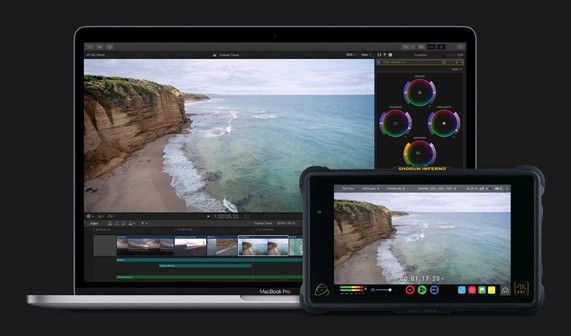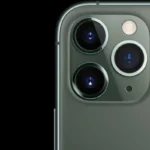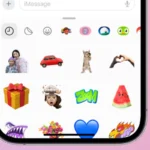Apple ProRes has long been the industry’s go-to codec for high-quality video production, prized for its balance of image fidelity, efficient compression, and post-production flexibility. In 2025, Apple has doubled down on its commitment to ProRes by unleashing major hardware and software improvements—reshaping what’s possible for filmmakers, editors, and content creators across the entire ecosystem.

Native ProRes Encoding Comes to Windows and Linux via DaVinci Resolve
One of the most groundbreaking developments this year is Blackmagic Design’s DaVinci Resolve 19.1.4 update, which finally introduced native Apple ProRes encoding support on Windows and Linux platforms. For years, ProRes encoding was limited to macOS, forcing users on other platforms to rely on complicated workarounds or transcode-heavy pipelines.
Now, cross-platform creators can export ProRes files directly from DaVinci Resolve without losing quality or efficiency. This update also includes support for Blackmagic RAW SDK 4.5 and new Samsung Log LUTs, giving editors greater flexibility when color grading or mixing formats. It’s a big win for collaborative workflows in multi-OS production environments.

ProRes Performance Supercharged by M3 Ultra and M4 Max
On the hardware side, Apple’s latest silicon pushes ProRes processing to new heights.
M3 Ultra: Built for 8K Multistream Workflows
The M3 Ultra chip is a beast for post-production. With four dedicated ProRes encode and decode engines, it can handle up to 24 simultaneous streams of 8K ProRes 422—a staggering leap in multitasking power. Combined with support for up to eight Pro Display XDRs, the M3 Ultra is engineered for large-scale editing studios, VFX workflows, and real-time playback of ultra-high-resolution content.
M4 Max: Elevating Mac Studio for Video Creators
The M4 Max chip, housed in the new Mac Studio, delivers up to 1.2x faster ProRes transcode performance in Compressor compared to the already powerful M1 Max—and up to 2.8x faster than Intel-based iMacs. This speed boost means creators can export and preview ProRes-heavy timelines with minimal delay, even when juggling multiple 4K ProRes layers, complex transitions, and motion graphics.
These advancements are especially useful in workflows involving Apple’s Final Cut Pro, Adobe Premiere Pro, and DaVinci Resolve—where time saved on renders and exports directly translates to faster delivery and greater productivity.
Hollywood-Grade ProRes on iPhone: 28 Years Later Breaks Ground
Apple ProRes isn’t just thriving on desktops. In a landmark moment for mobile cinematography, Danny Boyle’s upcoming film 28 Years Later was partially shot using modified iPhone 15 Pro Max devices—making it the largest feature film to date captured on smartphones.
This move underscores ProRes’s quality and flexibility. The iPhone 15 Pro Max’s ability to record in ProRes Log format gives filmmakers the dynamic range they need for serious color grading in post-production. For indie creators and budget-conscious studios, it’s a signal that cinematic production is no longer bound by traditional camera rigs.
ProRes on iPhone: Now a Serious Tool for Mobile Creators
First introduced on the iPhone 13 Pro, Apple ProRes recording is now a standard feature on all iPhones with the A15 Bionic chip or later. This includes the iPhone 13 Pro, 14 Pro, 15 Pro, and upcoming models. Users can shoot in ProRes 422 HQ at up to 4K resolution (when using external storage), making iPhones legitimate tools for documentary work, vlogs, commercials, and even television production.
In 2025, support for Apple Log color profiles and external SSD recording has only strengthened iPhone’s position as a mobile production powerhouse. Paired with apps like Filmic Pro or Apple’s own Camera app, creators can shoot, preview, and edit footage in workflows that rival mirrorless and cinema cameras.
With broader OS support, more powerful hardware acceleration, and expanded use in high-profile projects, Apple ProRes in 2025 is no longer just a codec—it’s the backbone of a cross-device, cross-platform revolution in video editing and filmmaking. Whether you’re working on a studio rig or an iPhone, ProRes continues to set the standard for quality and creative control.
What is Apple ProRes
Apple ProRes is a video codec developed by Apple that offers high-quality and efficient video compression. Introduced in 2007, this codec has become widely used in the video post-production industry. ProRes is known for its ability to provide high image quality while maintaining smaller file sizes compared to uncompressed video. This makes it a popular choice among video professionals for editing, color grading, and finishing in workflows where video quality is paramount.
The format is versatile, supporting a variety of resolutions, from standard definition up to 8K. It manages to strike a balance between compression efficiency and visual fidelity, making it visually lossless despite being a lossy compression format. It has several variations, each tailored to specific needs and data rate requirements. ProRes has also expanded beyond the confines of professional video cameras and editing suites; newer iPhone models, starting with the iPhone 13 Pro, have brought this high-end video capability into the hands of consumers.
Key Takeaways
- ProRes is a video codec from Apple that combines high quality with efficient compression.
- It supports up to 8K resolution and is considered visually lossless.
- The codec is available on professional equipment and some consumer devices, like the iPhone 13 Pro and newer models.
Understanding Apple ProRes
Apple ProRes is a codec used to compress video while maintaining high quality. This section explores the basics, how ProRes works within the Apple ecosystem, the different versions available, and practical scenarios for its use.
Fundamentals of ProRes
ProRes is a line of codecs that Apple invented. It keeps video quality high by using advanced compression methods. This means videos look almost like the original, even though they take up less space. ProRes works well with many Apple products. It ensures videos edit smoothly on devices like Macs.
ProRes in Apple Ecosystem
Apple integrates ProRes closely with its hardware and software. Users can record ProRes videos on devices like the iPhone. Editing apps such as Final Cut Pro, Motion, iMovie, and Compressor use ProRes for better performance. It allows videographers to capture, edit, and share their work more effectively.
Details on ProRes Versions
There are several types of ProRes to fit different needs:
- ProRes 422 Proxy: For rough editing with smaller file sizes
- ProRes 422 LT: Balances quality and data rates
- ProRes 422: A good choice for most video needs
- ProRes 422 HQ: Higher data rates for top-quality HD and SD video
- ProRes 4444: For the best color fidelity and alpha channel support
- ProRes 4444 XQ: The highest quality with even more detail
These options give users a range of quality levels for 4K, HD, and SD videos.
ProRes Usage Scenarios
ProRes suits many video production tasks. TV shows, cinema, and YouTube creators rely on it. Ad makers use it because it keeps colors true. ProRes is perfect for editing, post-production, and video capture. It answers to needs across the spectrum, from high-end commercial work to personal video projects.







